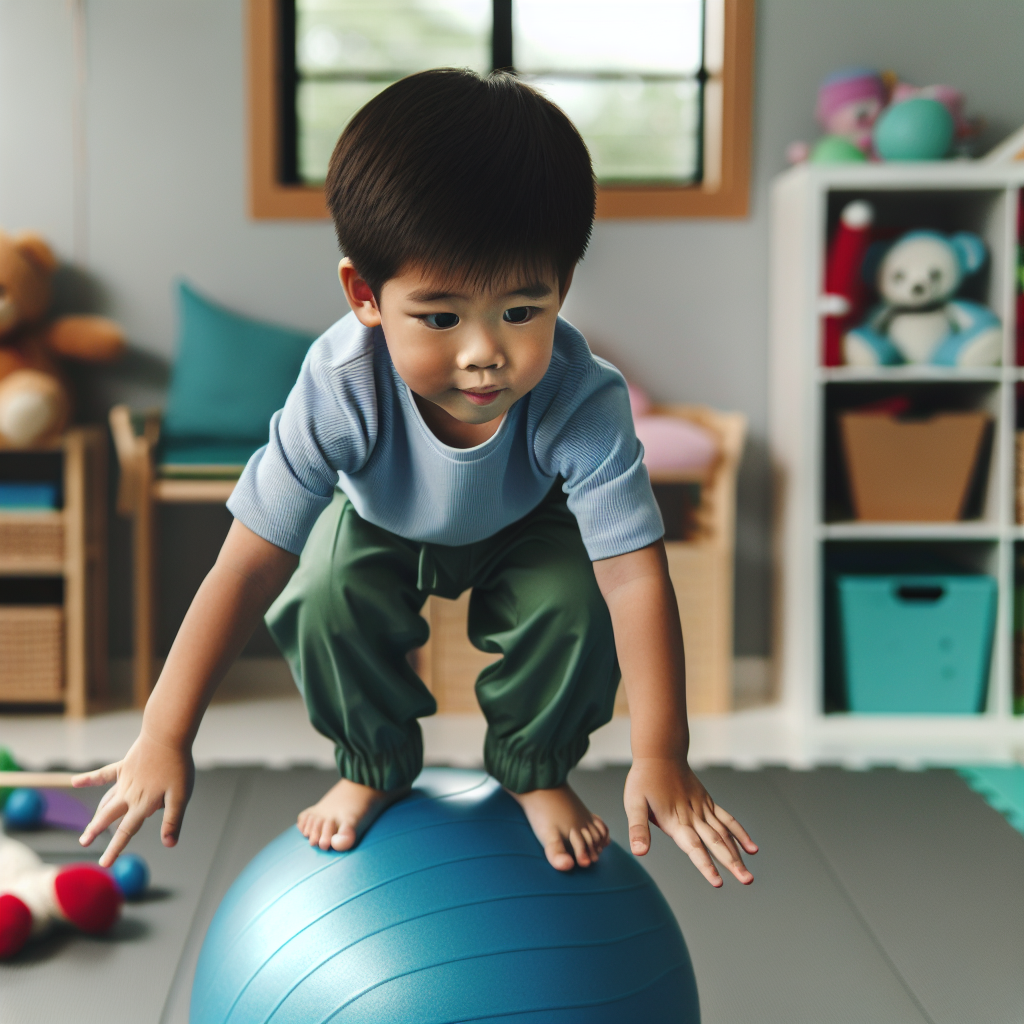Proprioception is the body’s ability to perceive its own position in space. This internal sense plays a critical role in our daily lives, allowing us to move and interact with our environment effortlessly. For many children, proprioception develops naturally through growth and environmental interaction. However, some children face challenges with proprioceptive dysfunction, which can significantly impact their motor skills, behavior, and overall development.
What is Proprioceptive Dysfunction?
Proprioceptive dysfunction occurs when the body has difficulty interpreting signals from muscles and joints. This can lead to problems with coordination, balance, and spatial awareness. Children with proprioceptive dysfunction may appear clumsy, have difficulty navigating new environments, or struggle with tasks that require fine motor skills.
This condition is not just about physical capabilities; it can affect emotional and social development as well. Children may become anxious or frustrated due to their inability to perform tasks that seem simple to their peers. Consequently, this can lead to avoidance of physical activities, social isolation, and a decline in mental well-being.
Signs and Symptoms
Recognizing the signs of proprioceptive dysfunction is the first step towards helping a child. Some of the key indicators include:
- Difficulty judging force or pressure when handling objects, which can result in being too rough or too gentle.
- Problems with fine motor skills, such as buttoning shirts or tying shoelaces.
- Challenges with gross motor skills, like jumping, climbing, or riding a bike.
- A tendency to bump into people or objects frequently.
- Preference for tight clothing or a need for heavy blankets to feel secure.
The Role of Sensory Health
Sensory health is integral to understanding proprioceptive dysfunction. It encompasses not only the traditional five senses but also the lesser-known senses such as proprioception. For a comprehensive overview of sensory health and its importance, visit Sensory Health on Avix Health.
Causes of Proprioceptive Dysfunction
Proprioceptive dysfunction is often associated with conditions like autism spectrum disorder, attention deficit hyperactivity disorder (ADHD), and sensory processing disorder (SPD). However, it can also occur independently. The exact causes are not fully understood, but it is believed that genetic and environmental factors play a role.
Diagnosis and Assessment
Diagnosis typically involves a multidisciplinary approach, including input from pediatricians, occupational therapists, and sometimes neurologists. A comprehensive assessment may include:
- Observation of play and daily activities.
- Interviews with parents or caregivers.
- Standardized testing for sensory processing abilities.
Treatment and Management
Occupational therapy is at the forefront of treatment for proprioceptive dysfunction. Therapists may use Techniques for Improving Sensory Integration in Children to help children develop better body awareness and motor skills. Interventions can include:
- Activities that provide resistance or weight-bearing, such as pushing or pulling heavy objects.
- Use of equipment like trampolines and swings to enhance proprioceptive input.
- Incorporation of Sensory-Based Interventions for Stress Reduction to help manage anxiety and improve focus.
Strategies for Parents and Caregivers
- Create a Sensory-Friendly Environment: Ensure your home is conducive to sensory exploration, with areas for active play and quiet relaxation.
- Engage in Sensory-Rich Activities: From Sensory Walks for Cognitive Function to playing with textured toys, there are many ways to stimulate proprioceptive development.
- Consistent Routines: Children with proprioceptive dysfunction often respond well to structured routines that provide predictability and security.
Role of Diet and Nutrition
Nutrition also plays a role in sensory health. Adequate intake of omega-3 fatty acids, for instance, has been linked to improved neural function. For more information, explore niche resources on the impact of diet on sensory processing, such as the Brain Health section on Avix Health.
Technological Advances in Treatment
Recent technological advancements have introduced new ways to support children with proprioceptive dysfunction. From virtual reality therapies to apps designed to improve sensory integration, the landscape of treatment is evolving. A notable resource on this topic is the International Society for Virtual Rehabilitation, which provides information on the latest research and developments in the field.
The Importance of Early Intervention
Early intervention is crucial for children with proprioceptive dysfunction. The sooner a child receives support, the better their chances are for improving proprioceptive abilities and reducing the impact on their daily life. For more in-depth research, the STAR Institute for Sensory Processing is an excellent resource that offers a wealth of information on sensory processing challenges and interventions.
Conclusion
Proprioceptive dysfunction in children is a complex condition that requires understanding, patience, and appropriate interventions. By recognizing the signs, seeking professional assistance, and providing a supportive environment, parents and caregivers can make a significant difference in the lives of affected children.
For those looking to delve deeper into this subject, the Sensory Integration Global Network offers extensive resources on sensory integration theory and practice. Another valuable resource is the American Occupational Therapy Association, which provides guidelines and best practices for occupational therapists working with sensory disorders.
As research continues to shed light on proprioceptive dysfunction, we gain more tools and strategies to support the children who navigate this challenge. With the right support, these children can thrive and reach their full potential.



